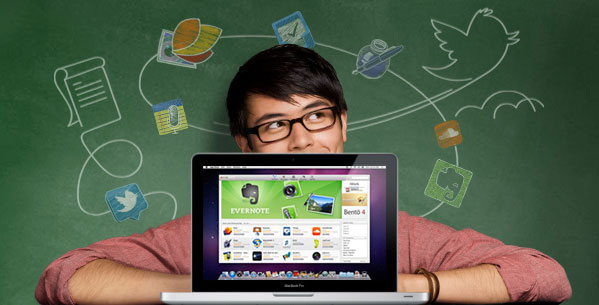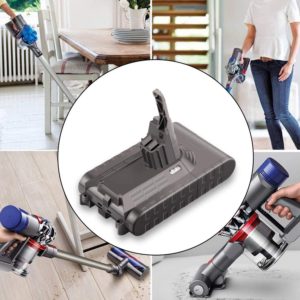It’s back to school time again when the flyers are inundated with dozens of laptops and tablet PCs. Get asked a lot about what laptop or tablet to buy. Today AussieBatt laptop experts share the advice on laptop computer and tablet buying is good for year-round shopping.
“Mobile, of course, is the largest piece of the puzzle. Like most post-secondaries, we’re seeing each student connecting concurrently via three to four devices, so that means we’re paying a lot of attention to wireless capacity. That, rather than flavour of access, is our major challenge,” said Mike MacGregor Vice Provost and Associate Vice President (Information Technology) and Professor at University of Alberta.
K-12 parents and students should check with the actual school they are attending, on what the suggested devices are. The Edmonton Public School Board for example uses the online Google Apps for Education. It has purchased more than 15,000 Google Internet based Chromebook laptops but any other laptop or tablet that goes online will have the same access to the online system.
“Students can bring any device they like, but that’s the starting point,” said EPSB’s Terry Korte. “We have Chromebooks available for anyone who cannot or chooses not to bring their own device.”
In contrast, the Edmonton Separate Catholic School Board uses Microsoft collaboration tools and Office 365, free to students and educators.
“We place high importance on a device’s battery life and tactile keyboard,” said IT director Dan Durand.
As for laptops, notebooks and MacBooks versus tablets and iPads, most educators agree the latter are better consuming devices compared to the much more efficient laptop with larger screen and dedicated keyboard. Sure, tablets and iPads are cool and some 10-inch models seem OK but they simply can’t cut it for creating school content.
Now for the real challenging part. How do you shop around for a PC or Apple laptop?
Apple MacBooks are a no brainer. The choices are simple from the ultralight MacBook Air to the heavier MacBook Pro. They cost more than the average Windows laptop because they do not compromise on how they are made, using the newest Intel processor and graphics chips. The Air starts at $999 while the heavier MacBook Pro starts at $1,199.
Windows laptops are a labyrinth of brands, styles and prices starting at $350 going all the way up to several thousand. Some in fact are better than their closest Apple counterparts like the sharper and lighter Dell XP 15. But buying an advertised $350 laptop is not a steal. You are buying older and slower technology, shorter Dell r795x battery life, heavier and hot running.
A word about AMD processors versus Intel processors. Intel makes faster processors with a larger marketing budget boasting impressive performance, sometimes almost twice as fast with similar AMD chips. But that speed gain is not noticed in school work running office and Internet tasks. It is if you are playing a graphics intensive game or are running an 85 MG 35,000 row Excel file, which students simply don’t. AMD equipped laptops will save you $100 and come with larger hard drives or memory to make up for the mostly un-noticeable slower performance.
-Most sub $400 laptops run on older Intel Pentium chips, originally ment for desktop PCs. They are heavy to lug around, hot on your lap if you can stand the weight and the most inefficient in battery use, no more than several hours. Don’t be fooled by the 15-inch “HD” screen. It’s the lowest of resolutions, 1366×768 pixels. and unevenly lighted when viewed from one angle. Have you noticed how you need to adjust the screen angle on these cheaper laptops to see the edges of the screen better? Pricier laptops with the same resolution have better viewing angles. Compare them side by side in a store.
-$500 to $700 laptops offer more power with newer chips, longer battery life and more portability. They don’t offer better screen resolution still at 1366 x 768 pixels but better models offer IPS technology for wider viewing angles. The lower end of these laptops may not come with a touch screen, something you will start missing when using Windows 8 even if you don’t like the new OS.
-$900-$1,200 Windows laptops can equal or better Apple portables. They feature Full HD 1920 x 1080 pixel screens with IPS wide viewing technology. These laptops are lighter, faster and run longer. They use the newest Intel processors. Many are hybrid, with swing out or removable keyboards to become touch tablets in Windows Metro or enhanced mode. This is where you will find the ideal size 14-inch laptops with Full HD 1920×1080 resolution for clearer text and reading.
-$1,400 and up go overboard with cutting edge manufacturing, super thin, light and long running. They are a good investment as they are so well made, they will outlast cheaper next generation laptops. They feature QHD+ 3200 x 1800 like the Dell XPS 15 (15.6-inches) and Toshiba’s Satellite new P50t 15.6-inch Ultra HD LCD touchscreen display with an eye-popping 3840 x 2160 resolution. Ultra portable 13-inch models like Acer’s S7-392-9439 and Samsung’s ATIV Book 9 (2014 edition) are in this category with brilliant 13-inch screens, and arge SSD drives, but some folks prefer the larger working screen space 14-inch models have.
Deeper tech tips on laptops
-14-inch laptops with an in-between 1600×900 resolution offer a good balanced price value. One annoying experience with higher than Full HD 1920×1080 resolution screens approaching QUAD resolution is how small icons and text looks, sharp yes, but tiny, requiring you to adjust your computers display settings, which vary by each application. Windows 8.1 handles text and icons in high resolution screens much better than Windows 8.
-The rule of thumb on acceptably sharp screen size is: 1366×768 for under 11-inch screens, 1600×900 for under 14 inch screens and Full HD 1920×1080 for 15-inch screens or higher.
-Intel fourth generation processors that have “4000” in their HD graphics specs, come in i3, i5 and i7 chip flavours. The best bang for your buck is the i5 processor which automatically boosts its clock speed when needed, minimizing Compaq presario cq42 battery use.
-Some models still come with Windows 8 while $50 pricier versions come with Windows 8.1. You can save and do the free upgrade yourself.
Here are examples of Windows laptop/notebooks offering good value for their features. You can use this as a base comparison when shopping for new Windows laptops of any brand.
-Acer Aspire V11, $429.99 11.6-inch touchscreen features a Celeron N2930, 4GB RAM, fanless whisper quiet design, Windows 8.1.
-Dell Inspiron 11 3000 Series 2-in-1, $499.99 features an 11.6-inch touchscreen HD 1366×768 wide angle IPS viewing 360 degree hinge screen, spill-resistant keyboard, Multi-Touchpad with integrated scrolling gestures, 4 GB RAM, 500GB spin drive and Windows 8.1 Exceptional screen view and compact. Although it has a Pentium Quad core it is one of the sweetest affordable under 12-inch laptops around.
-ASUS Transformer Book Flip T300 (TP300L) $799 with a 13.3 inch HD 1366×768 screen that swivels 360 degrees in an Intel iCore 3 or i5, Asus instant on, free 16 GB web storage, Windows 8.1. It’s an affordable model with a little bit of everything.
-HP ENVY Touchsmart 15, $899.99, features a 360 degree hinged 15.5 Full HD 1920×1080 screen, Intel Core i5 4210 U, 8GB RAM, 750 GB, full keyboard with numeric keypad, Beats Audio, unique HP Control Zone trackpad gesture zones, Windows 8.1. You pay for the hinge and larger screen.
The much improved Windows Surface Pro 3 is as good as any competitor and comes with Stylus
supplied
-Windows Surface Pro 3, $849.99 (64 GB SSD) to $1,999.99 (512 GB SSD) with an optional but necessary $129.99 keyboard cover, 12-inch FullHD 1920×1024 screen, Intel Core i5, microSD memory upgrade slot, Windows 8.1. Bonus Stylus included which offers great value that makes up for the optional quality keyboard you need. Big improvements over previous models, like noticeably thinner, with a multi-angle back stand and a slightly raised keyboard angle. Microsoft knows they have a greatly designed model and charging accordingly.
-Acer S7-392-9439, $1,600, 13.3″ 2560 x 1440 WQHD IPS LED-backlit multi-touch display, – 64-bit Intel Core i7-4500U processor (1.8GHz/3.0GHz w/ Turbo Boost) – 8GB DDR3L RAM –256GB SSD, 10-point multi-touch control – triple display support – Intel HD Graphics 4400 – Dolby stereo, Acer ZoomPerfect touchpad, Windows 8.1 This is a top-tier laptop, light, fast and thin. You get what you pay for.



1 thought on “Deeper tech tips for back to school laptops and tablets”
Comments are closed.